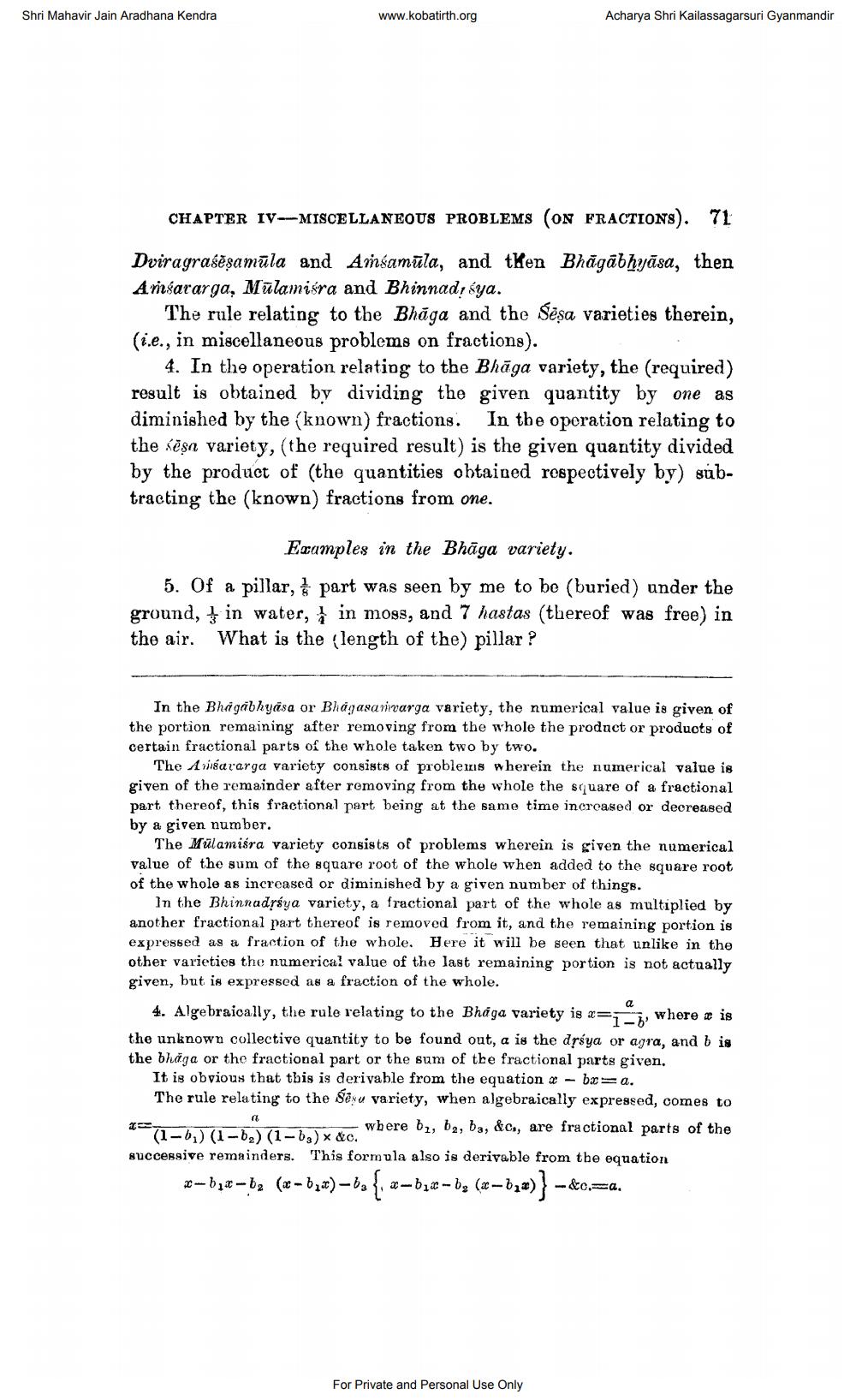________________
Shri Mahavir Jain Aradhana Kendra
www.kobatirth.org
Acharya Shri Kailassagarsuri Gyanmandir
CHAPTER IV-MISCELLANEOUS PROBLEMS (ON FRACTIONS). 71
Dviragrafēsamula and Amsamüla, and then Bhāgābhyāsa, then Arsararga, Mulamiéra and Bhinnad, sya.
The rule relating to the Bhāga and the Sēsa varieties therein, (i.e., in miscellaneous problems on fractions).
4. In the operation relating to the Bhāga variety, the (required) result is obtained by dividing the given quantity by one as diminished by the (known) fractions. In the operation relating to the sëşa variety, (the required result) is the given quantity divided by the product of (the quantities obtained respectively by) subtracting the (known) fractions from one.
Examples in the Bhāga variety.
5. Of a pillar, t part was seen by me to be (buried) under the ground, } in water, in moss, and 7 hastas (thereof was free) in the air. What is the length of the pillar ?
In the Bhågribhyasa or Bhagasanvarga variety, the numerical value is given of the portion remaining after removing from the whole the product or products of certain fractional parts of the whole taken two by two.
The Avisavarga variety consists of problems wherein the numerical value is given of the remainder after removing from the whole the square of a fractional part thereof, this fractional part being at the same time increased or decreased by a given number.
The Mülamiéra variety consists of problems wherein is given the numerical value of the sum of the square root of the whole when added to the square root of the whole as increased or diminished by a given number of things.
In the Bhinnadráya variety, a fractional part of the whole as multiplied by another fractional part thereof is removed from it, and the remaining portion is expressed as a fraction of the whole. Here it will be seen that unlike in the other varieties the numerical value of the last remaining portion is not actually given, but is expressed as a fraction of the whole.
4. Algebraically, the rule relating to the Bhaga variety is x=, where x is the unknown collective quantity to be found out, a is the drsya or agra, and b is the bhäga or the fractional part or the sum of the fractional parts given,
It is obvious that this is derivable from the equation & -bæra. The rule relating to the Besu variety, when algebraically expressed, comes to (1-6,) (1-6) (1-63) * &c.
where bz, ba, ba, &c, are fractional parts of the
" successive remainders. This formula also is derivable from the equation 2-61-b2 ( - 6zx) -63, -612-b, (x
to. a.
For Private and Personal Use Only




